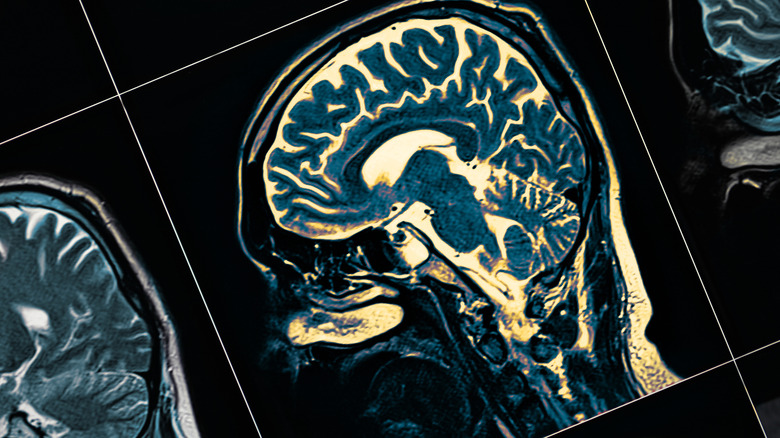The Science Behind How Prosopagnosia Affects Your Brain
When actor Brad Pitt, who has one of the most widely recognizable faces in the world, announced that he believed he suffered from a condition where he cannot remember people's faces, it came as something of a surprise (via GQ). The condition he mentioned is called prosopagnosia, and it is a rare neurological disorder also known as face blindness.
The National Institute of Neurological Disorders and Stroke (NINDS) explains that some people diagnosed with prosopagnosia might not recognize a familiar face, but others may not be able to distinguish between unfamiliar faces. Pitt seems to have the latter because he explained that he has difficulty remembering new people he meets in social settings, namely at parties. The NINDS also reports that some people might not be able to tell the difference between a face and an object. And some people suffering from the disorder can't even recognize their own face. According to the journal Psychonomic Bulletin & Review, approximately 2% of the population suffers from prosopagnosia.
Prosopagnosia is caused by a brain abnormality
There are two forms of prosopagnosia: congenital and acquired. Verywell Health reports that children born with prosopagnosia may not even realize they have the condition until they are older. Researchers don't think that congenital prosopagnosia is caused by structural abnormalities in the brain or brain damage, but rather believe that it might be inherited, since it runs in families, according to the NINDS.
Experts don't believe that acquired prosopagnosia is the result of any kind of vision or memory problems. Instead, they think it stems from either damage or some other kind of abnormality occurring in the right fusiform gyrus of the brain. Verywell Health points out that this kind of damage could be the result of a brain injury or stroke. The right fusiform gyrus is a fold in the brain that plays a role in how neural systems manage facial perception and memory, per the NINDS. In fact, the fusiform gyrus seems to be activated specifically for the recognition of faces, as Operative Neurosurgery reports. Researchers also think that this area of the brain could play a role in color and word recognition.
Prosopagnosia is complicated
Prosopagnosia is complex because while it seems to be isolated to the right fusiform gyrus, several processes must take place in order for the brain to recognize a face, according to the Prosopagnosia Research Center. MRIs and other tests reveal that there may be as many as six areas on the right side of the brain that help the brain recognize a face. In addition, there might also be a few sections on the left side of the brain involved with that process. These portions of the brain are interconnected, meaning they are all stimulated when the eyes view a face. All of these variables make understanding the condition more difficult.
There is no cure for prosopagnosia, and unsurprisingly, living with it can be challenging. Verywell Health explains that people with the condition often learn to identify people through other characteristics, such as their hair, voice, or mannerisms.


